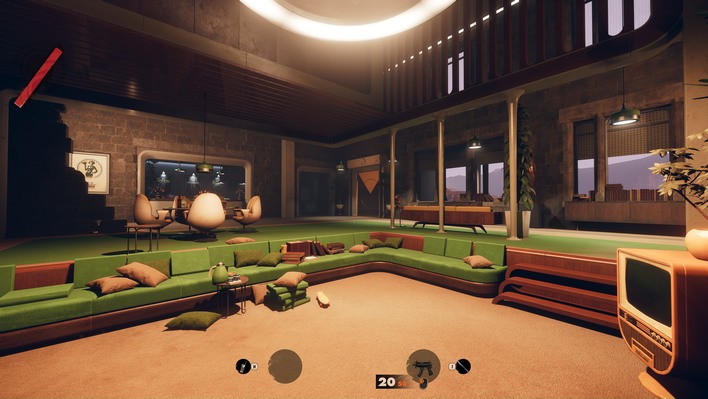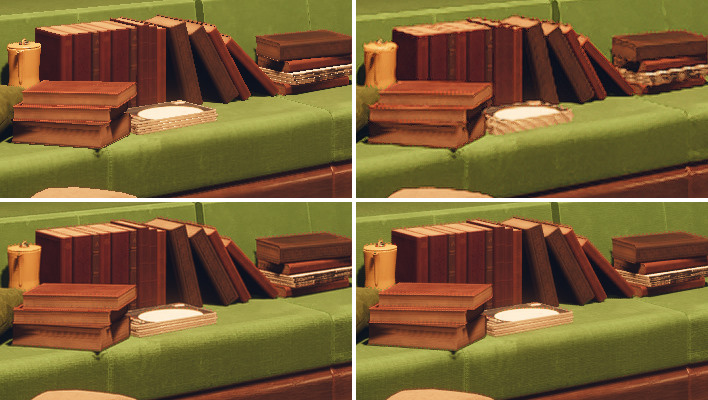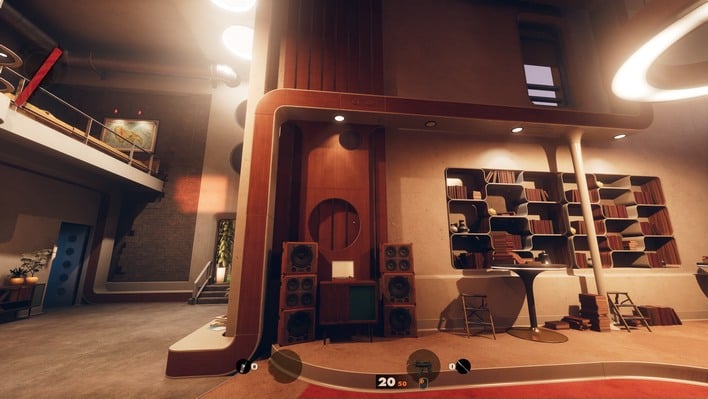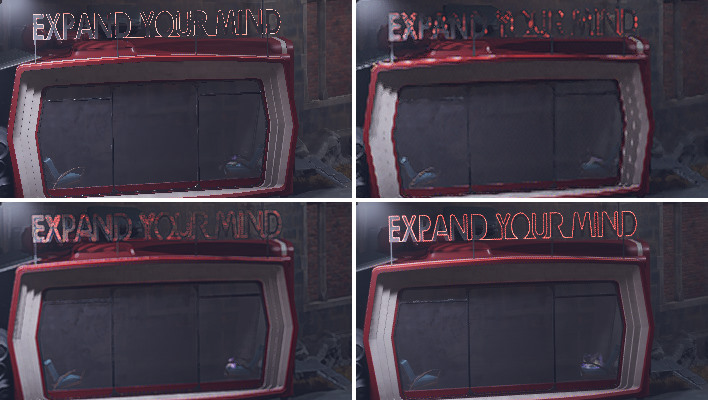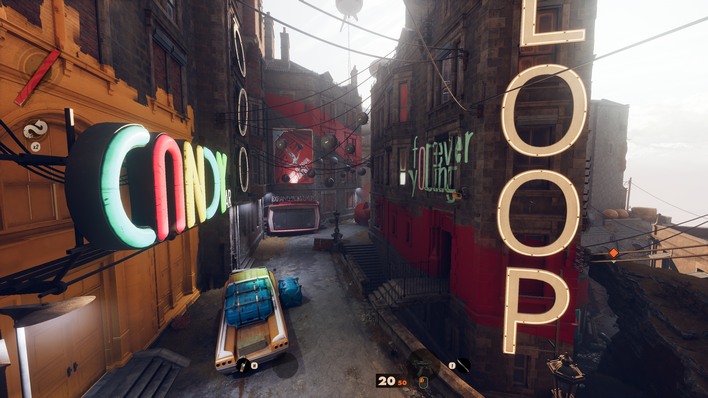AMD FSR 2.0 Takes On NVIDIA DLSS In Deathloop, Believe The Hype

Smart upscaling technologies came to the forefront of gaming graphics during the last game console generation, when players were buying 4K TVs, yet even the upgraded game consoles (the Xbox One X and PlayStation 4 Pro) struggled under the massive weight of 8.3 megapixel-rendering. Techniques like dynamic resolution and checkerboard rendering became standard across the industry almost overnight.
When DLSS came out, it was a unique technique that ultimately needed some additional refinement. It required huge pre-trained game-specific AI model downloads and in some situation was arguably less effective at reducing upscaling artifacts than a standard blur filter. It could also introduce some strange artifacts on its own. NVIDIA updated and fine-tuned the technology and came up with DLSS 2.0, which is almost a complete overhaul. It's basically a temporal-anti-aliasing-based upscaler with some secret NVIDIA sauce, and it works great.
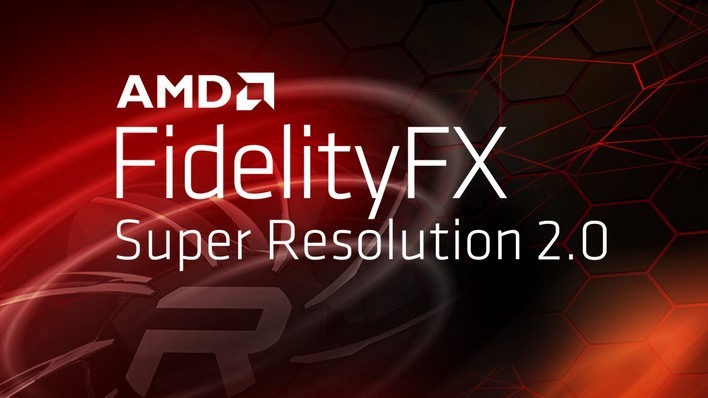
Just as it took NVIDIA two tries to get DLSS right, now here we are with AMD's second attempt, known naturally as FSR 2.0. It's only available in one game right now, and that game is Arkane's Deathloop. We've tested FSR 2.0 directly against DLSS, which the game also supports. If you're in a hurry, we'll give the game away: FSR 2.0 is a credible competitor against DLSS 2.x.
We're hesitant to make any more affirmative statement than that because we've only been able to test it on a single game, and that game's implementation of DLSS is not the best. Notably, it lacks a DLSS sharpness control. Due to the limited testing circumstances, this isn't going to be a real deep dive into FSR 2.0; we're just taking a quick look at some screenshots, which doesn't tell the full story. Still, this is a fair comparison of a current version of DLSS and FSR 2.0, so without further ado, let's get to pixel-peeping.
FidelityFX Super Resolution 2.0 in Deathloop, Pictured
What we're going to do is pore over pictures from four scenes in the very beginning of Deathloop by cutting out portions of screenshots to present them without resizing. We're testing using the "Performance" preset for all of the upscaling methods, because the perfect 4:1 upscaling from 1920×1080 to 3840×2160 produces the least visual artifacts, and it also presents the biggest performance gain.The images below suffer slightly from the lossy compression we use on the site here. If you'd like to get the full-resolution, full-quality source images, you can hit our Google Drive [297M] for them, and we recommend you do so if you really want to get a good look at the pixels.
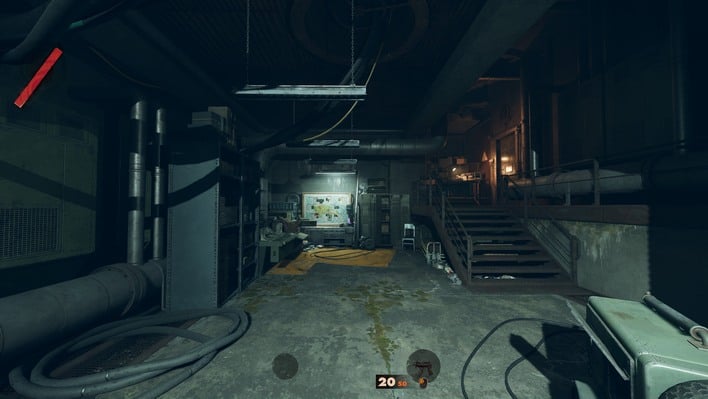
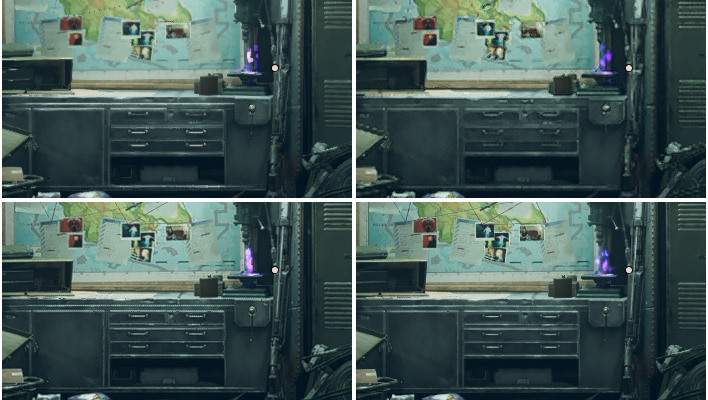
The well-lit second test scene even more clearly demonstrates the performance of DLSS and FSR 2.0. Edges are both clearer and smoother, while object interiors seem more detailed after the upscaling. However, you can also see evidence of some clear over-sharpening artifacts, particularly along the top edges of the books. The over-sharpening effect seems ever-so-slightly worse on DLSS in our eyes, although there's some disagreement on that matter among the staff.
Deathloop includes a sharpening control for FSR, but we left it at the default value of 10 (maximum) for the purposes of this comparison because DLSS, despite supporting such a function, doesn't have an equivalent control in this title. Other games, like God of War, have provided a DLSS sharpening slider, so it would be nice to see feature parity in future titles for the sake of comparison.
DLSS actually falters ever-so-slightly in this instance; the lines on the geometry aren't as solid as those that FSR 2 produces. However, both current solutions are far superior to the native presentation, and FSR 1 looks pretty good here too. There's another effect that you can notice here which we'll talk about more in a moment—notice how the area behind the wooden planks is much darker in the native resolution shot?
This shot, from the beginning of the first level of the actual game, is a long shot down a street. DLSS clearly completes the neon sign better than FSR 2.0, and it does a better job with the geometry below, too. FSR 2.0 doesn't do a bad job though, and FSR 1.0 doesn't look nearly as good. The native presentation is much brighter than the other three, because the lighting in this scene is radically different at full 4K—take a look:
One thing to keep in mind when using these upscaling methods is that the game engine is rendering the game in a lower resolution. In modern game engines, this can have big effects beyond just how sharp the geometry is. In Deathloop, the game seems to use ray-traced screen-space effects for some of its lighting, and lowering the render resolution means that you have less "screen space" to work with, ultimately changing the final result.
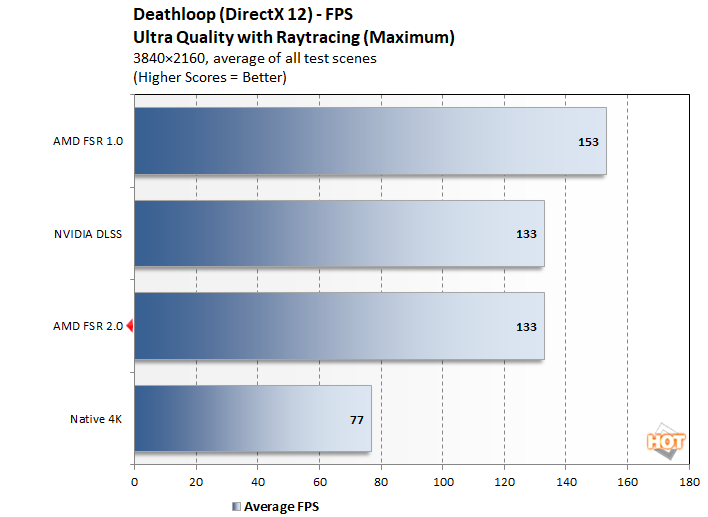
Tested using "Performance" preset.
While both FSR 2.0 and DLSS offer a marked improvement in image quality in Deathloop, the ultimate goal of using image upscaling is to improve performance, without marring the visual experience. Our test machine, equipped with a Ryzen 7 5800X3D and GeForce RTX 3080 Ti, handles Deathloop's Id-Tech-derived Void Engine with aplomb, but it sure would be nice to top triple-digit framerates for our fast 120 Hz gaming monitor. And, with upscaling, you can.
Across our testing in this game, we found the performance of FSR 2.0 and DLSS to be functionally equivalent. That's nice considering that the image quality is reasonably comparable, and also that FSR 2.0 is fully open-source and cross-vendor. We're not quite sure how much DLSS 2.0 leverages a GeForce RTX cards' specialized tensor processing cores in Deathloop, but the fact that FSR 2.0 lands a few blows in the comparison without any such specialized hardware is something AMD can (and does) boast about.
Indeed, developers who wish to implement FSR 2.0 can do so using the source code from AMD's GPUOpen project. The Radeon team claims that it only takes five minutes to implement FSR 2.0 if you're already implementing DLSS, as they require the same inputs. Considering the improvement over FSR 1.0, we hope every developer jumps on AMD's new technology as soon as possible.

